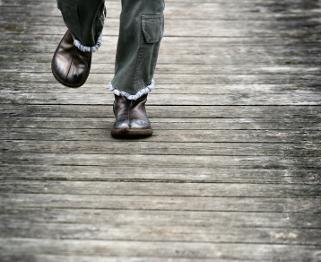Majority of people who are actively involved in sports can experience pain at the bottom of the heel. Pressure that is exerted on the heels during running, jumping, or intense exercise can cause the pain.
The feet are designed to bear the weight of the body and are therefore considered strong. However, the muscles, ligaments, tendons, or bones of the foot can be damaged with continuous or excessive use. Heel pain can be mild or in some cases, it can be severe that it can get adversely affect the performance of daily activities. Sometimes, the pain can even be disabling.
To prevent heel pain, the first thing to do is maintain an ideal weight. The plantar fascia, which is a tissue that supports the arch of the foot, progressively loses its elasticity as one gets older. Since the fat pad on the heel also becomes thinner, it is more susceptible to swelling or bruising when subjected to too much pressure. Thus, if one is overweight, this puts more stress on the plantar fascia and can lead to inflammation called plantar fasciitis.
Shoes should fit well, not too tight nor too lose. People with flat feet or high arch can use shoe inserts or can consult a podiatrist for custom foot orthotics. Those whose jobs involve standing on a hard floor or standing in one spot for long hours should invest in good orthotic shoes.
For people who are active in sports, cutting back a little on rigorous activities can help ease pain. It is essential to wear appropriate shoes with adequate arch support.
Stretching and strengthening exercises can be done to strengthen the muscle that supports the arch to reduce stress on the ligament. This can also help it become more flexible. It is recommended to rest the feet and avoid activities that can make heel pain worse.
It is important to observe proper care the feet before pain occurs. If there is already some degree of heel pain, there are conventional management options like rest, application of cold compress, and foot elevation to help relieve pain.
When the condition does not improve within the next few days after conservative management and heel pain is still felt, a visit to the podiatrist is recommended to rule out more serious foot problems.
